Grief and loss are integral aspects of nursing care, demanding sensitivity and empathy. Nurses frequently provide solace to patients and their families during times of bereavement, offering a supportive presence and lending a listening ear. Moreover, nurses are instrumental in delivering end-of-life care, ensuring patients’ comfort in their final moments. Collaborating with healthcare members, they attend to not just the physical aspects of pain management but also the emotional and spiritual facets of the end-of-life experience. Nursing’s role in easing grief and navigating loss is fundamental, underscoring the profession’s dedication to holistic, compassionate care.
Utilize this comprehensive guide to assist you in developing a well-rounded nursing care plan tailored specifically for individuals experiencing grief. By following the outlined steps and recommendations, you can effectively address the unique needs and challenges associated with grieving.
What is Grieving and Loss?
Grieving is a unique and personal emotional and psychological reaction to a perceived or real loss. It encompasses a range of manifestations, such as physical symptoms, emotional distress, and behavioral changes. Grief can be defined as the neuropsychological response to any kind of significant loss, with elements both typical and unique to each individual or situation. The grief response is generally associated with degrees of suffering, at times intense or even unbearable, and of widely variable duration (Walsh & Walsh-Burke, 2021).
Loss pertains to the absence of something valuable, be it an object, person, emotion, or idea. There are various categories: Actual Loss, which is acknowledged by others; Perceived Loss, which is internal and might not be recognized by others; Maturational Loss, a natural part of growth; Situational Loss, which arises unexpectedly; and Ultimate Loss or Death, impacting both the deceased and those left behind, potentially serving as a growth opportunity for the survivors.
Mourning is defined as the public display of grief. Mourning emphasizes the external or public expressions of grief. It can be influenced by one’s beliefs, religious practices, and cultural context (PDQ Supportive and Palliative Care Editorial Board, 2022).
Bereavement is defined as the objective situation one faces after having lost an important person through death. Bereavement is conceptualized as a statement of the objective reality of a situation of loss via death.
Anticipatory grief is the expression of the symptoms of grief prior to the actual loss, the grief period following the loss may be shortened and the intensity lessened because of the previous grief. This term is most often used when discussing the families of dying persons, although dying individuals themselves can experience anticipatory grief. Anticipatory grief has been defined as the total set of cognitive, affective, cultural, and social reactions to expected death felt by the client and family.
Acute grief involves a period of intense emotions with a preoccupation with thoughts and memories of the deceased person that may result in a period of reduced engagement with life and prior activities. (Szuhany et al., 2021)
Integrated grief means that the individual has adapted to the loss so that grief is more in the background and they can meaningfully reengage in a life without the deceased.
Prolonged grief disorder is characterized by elevated and persistent mental distress following the loss. Factors contributing to prolonged grief reactions are maladaptive thoughts, avoidance behaviors, inability to manage painful emotions, differences in health and social status, and lack of social support that interferes with adaptation to loss.
Grieving Process
There are three phases of grief:
- Protest. Lack of acceptance, concerning the loss, characterized by anger, ambivalence, and crying
- Despair. Denial and acceptance occur simultaneously causing disorganized behavior, characterized by crying and sadness
- Detachment. Loss is realized; characterized by hopelessness, accurately defining the relationship with the lost individual and energy to move forward in life.
Kubler’s 5 Stages of Grieving
Kubler’s 5 Stages of Grieving outlines the emotional journey after a significant loss or distressing diagnosis. They include denial, where there’s shock and disbelief; anger, with feelings directed toward others; bargaining, where individuals seek deals with a higher power to delay the loss; depression, marking the realization of the loss, leading to withdrawal or open discussion; and acceptance, where the loss is recognized and thoughts shift towards the future.
Denial
Client: “You must be wrong. This cannot be happening to me.”
(Yes, I am sure that I heard the physician’s announcement clearly. But I am healthy; I feel healthy! I do not feel any pain at all. I do not have any sickness; this is all a set-up! I am too young to die, I still have plans for my future, and I still have many goals to achieve! I am sure that the physician had it wrong, I would look for a more competent doctor who would tell me otherwise.)
Every human who experiences death and dying is always subjected to grief. Typically, the initial reaction to an announcement of chronic disease or impending death is denial. Clients who were informed that they have a poor prognosis might refuse any additional treatment because they believe that they are well and healthy. It would be hard to deal with this kind of client especially because they might not want to listen to their caregivers’ advice regarding treatment. For the folks of a dying client, exclamations of disbelief might ensue.
Nurse: “Yes, I understand where your feelings are coming from. What you are feeling is a normal part of grieving.”
The nurse must constantly be by the client’s side to attend to his needs. The client might become argumentative at this stage, but this is only a normal response to grief. Nurses should understand and lend an ear to the client so the client knows that they can trust nurses with their feelings and that nurses are acting as an advocate for them during this critical stage in their life.
Anger
Client: “I hate my life! I don’t want to talk to anyone! Don’t come near me!”
(Just because I am sick does not mean I cannot do the things I used to do anymore. Do not patronize me, and I know how to handle myself, I do not need your help! You were never here for me, and I feel so afraid that this disease might take me away sooner. I would never show that I am sick, I do not want to be seen as a weakling!)
Angry clients often feel afraid and inadequate, and they exhibit these feelings through anger. The more they are ignored or discounted, the angrier they become. Physical aggression may also be involved in this stage, and this suggests that the client is already out of control. The client might become demanding and critical of the care given to him or her and often would argue with the caregivers just to impose his or her own opinion.
Significant others who experience anger because of an announcement of impending death would also compromise the care given to a dying client. He or she might restrict caregivers from entering the room and may resort to aggressive physical behavior when contradicted.
Nurse: “It is alright to vent out your feelings, I am here to listen to you. Please tone down your voice, we have other clients in the unit and we would not tolerate the shouting anymore.”
The nurse must never feel that the anger is directed towards them. As caregivers, they must gain control of their feelings and maintain self-awareness. Nurses should maintain eye contact and set limits in a firm manner. Nurses should also maintain a normal tone of voice and show that they are actively listening to them even when they are angry. However, they must watch out for possible signs of physical aggression. The nurse should never place the client between them and the door so they can easily access the door if the client becomes physically violent. Lastly, remain calm in dealing with an angry client.
Bargaining
Client: “I would give everything I own if I become healthy and free of this sickness. I promise to do good once my mother is freed from her sickness.”
(I know I cannot do anything to stop this disease from taking me (or my loved one) away. If only God would grant my wish to remove this disease, and I promise I would not return to my vices. I would also pray and be religious. If only this disease would be healed; I promise I would change my ways.)
A client who is finally settling down or trying to accept his fate is now in the bargaining stage. He or she would give anything just to reduce the cruelty of the disease or to achieve a good prognosis. The client is finally calming down, and the anger is slipping away. He or she may start to take in the caregivers’ advice and listen to the healthcare providers because they believe that if they do well, they will be rewarded with relief from their sickness.
Nurse: “I know you are going through a rough patch right now, and we are here to help and assist you all throughout.”
The nurse must be able to recognize the feelings of the client. He or she must be aware of the stage that the client is already in, and in bargaining, the client is now more open to accepting their advice. The nurse must take this opportunity to advise the client on where he can participate in his care or what he can do to alleviate his discomfort.
Depression
Client: “I would rather stay in my room than go out. I do not feel like doing anything all day.”
(Nothing can be done for me anymore. I cannot be cured of this disease; I might as well lie here and fade away. I would still die soon; all hope is lost for me. )
A depressed client lacks motivation, energy, and hope. He or she already believes that he cannot be cured of the sickness and that no intervention can help him or her. The client is slowly inching his way toward acceptance. He is more adherent to the treatments but lacks the motivation. This stage now precedes acceptance.
Nurse: “I am here to listen to your thoughts. You can voice them out anytime.”
The nurse must be aware of the symptoms of major depression. They must watch out for signs of impending suicide because most depressed clients, when left to themselves, are so depressed that they finally resort to suicide. Monitor the client’s activities but do not put a pattern on rounds. Check on them in unexpected moments. Provide the client with activities that would bring out positive thoughts and avoid triggers of any depressive feelings.
Acceptance
Client: “I am fully aware that I will have this disease for a long time. I would just let God handle my fate, and I would spend more of my time with my loved ones from now on.”
(I fully accept that I would die of this disease. Instead of feeling sorry for myself, I choose to spend my remaining time with my loved ones. I have to leave happy moments for them to cherish after I am gone.)
This is the last stage of Kubler-Ross’ grieving stages. The client has already embraced the fact that he could be taken away by the disease. More time for the family would be spent and reconciliation for past mistakes would also be possible at this stage. The client will endeavor to leave with a light heart if he has truly accepted the prognosis.
Nurse: “I am proud that you have overcome any negative feelings. It is good to see you using your time for your family and friends.”
Nurses should guide the client every step of the way. Now that the client has reached the final stage of acceptance, the nurse can plan out any interventions that would promote their comfort together with the client themselves. The client is now readily cooperative and would heed any advice from the caregivers. The nurse must also let the client know that all their efforts are appreciated and still let them feel special despite the prognosis or the condition of the client.
Leaving the person one loves or being left by the person one loves is a painful experience that every human should undergo. The way a person handles a critical situation would predict how well they could survive and nurses have an important role at this moment. Nurses are tasked to care for clients from the womb until the tomb, and that is exactly what they will do.
Worden’s 4 Tasks of Mourning
Worden’s 4 Tasks of Mourning describes the process of grieving and healing: First, one must come to terms with and accept the stark reality of the loss. Next, it’s crucial to deeply feel and work through the pain, using healthy coping strategies. As part of the healing journey, adapting to life without the deceased is essential, which can involve practical adjustments like removing their belongings. Finally, a balance is sought where emotions tied to the deceased are processed, allowing individuals to honor past memories while embracing the present and looking forward to the future.
Nurses hold a vital position in assisting individuals through their grieving process by offering empathetic support, counseling, and guidance on effective coping techniques. The nursing process encompasses developing a holistic care plan that attends to the client’s physical, emotional, and spiritual requirements during their journey of grief. Use this guide to help create a nursing care plan and nursing interventions for grieving.
Nursing Care Plans and Management
Nursing care plans are essential tools in the healthcare profession, providing a structured framework for nurses to deliver comprehensive and individualized care to clients. Nurses play a crucial role in supporting and guiding individuals through the grieving process, helping them cope with their emotions, and facilitating their journey toward healing and acceptance.
Nursing Problem Priorities
The following are the nursing priorities for clients experiencing grief and loss:
- Anxiety. Grief and loss often lead to intense emotional distress and anxiety. Prioritizing assessing the client’s emotional state, providing a safe space for them to express their feelings, and implementing interventions to help manage their emotional responses.
- Complicated grief. Some individuals may experience complex grief, characterized by persistent and severe symptoms. Identifying clients at risk for complicated grief and providing appropriate interventions is essential.
- Social isolation. Grief can lead to social withdrawal and isolation. Encourage and facilitate social support systems, such as family and friends, support groups, or counseling, to help clients navigate their feelings of loneliness.
- Risk of depression and suicidal ideation. Some individuals may be at risk of developing clinical depression or experiencing suicidal thoughts during the grieving process. Assess clients for signs of depression and suicidal ideation, and initiate appropriate interventions, which may include counseling or medication.
Nursing Assessment
Assessment is necessary in order to identify potential problems that may have led to grief and name any event that may happen during nursing care. The following are the assessment cues for a client experiencing grief and loss:
- Numbness
- Disbelief
- Anxiety
- Mourning or sadness
- Eventual recovery
- Crying
- Sighing
- Having dreams, illusions, and even hallucinations of the deceased
- Seeking out things or places associated with the deceased
- Despair
- Insomnia
- Anorexia
- Fatigue
- Guilt
- Loss of interest
- Disorganized daily routine
Nursing Diagnosis
There is significant overlap between the behavioral manifestations associated with the grieving process and symptoms of depression such as insomnia, guilt, ruminations, and lack of motivation. The fifth edition of the Diagnostic and Statistical Manual of Mental Disorders Fifth Edition (DSM-5) eliminated bereavement in the diagnosis of major depression. This change was added to recognize that in vulnerable individuals, grief can precipitate major depression within a short time and can be potentially lethal. DSM-5 outlines the features of a normal grieving process as follows:
- In grief, painful feelings come in waves, lessen in intensity and frequency over time, and are often mixed with positive memories of the deceased.
- The prevailing affect is one of emptiness.
- Self-esteem is usually preserved.
- While symptoms such as suicidal ideation can occur, they are generally focused on the deceased, such as a wish to join the deceased in death or feelings of guilt toward certain gaps or failures in the relationship with the deceased.
Also, here are examples of nursing diagnoses for grieving:
- Grieving related to the death of a family member due to illness as evidenced by crying spells, keeping the deceased’s belongings untouched, and reluctance to talk about the deceased.
- Grieving related to loss of health status following a chronic disease diagnosis as evidenced by patient’s statements of anger towards the diagnosis, fear of the future, and persistent preoccupation with changes in lifestyle and autonomy.
- Grieving related to loss of employment and financial security as evidenced by expressed concerns about family welfare, changes in sleep patterns, and decreased self-esteem.
Nursing Goals
Goals and expected outcomes may include:
- The client will express feelings of grief.
- The client will develop coping strategies and skills to help manage their own emotions and cope with the loss.
- The client will find meaning and purpose after a significant loss.
- The client will achieve a sense of closure and acceptance by exploring feelings, beliefs, and values related to the loss.
Nursing Interventions and Actions
Therapeutic interventions and nursing actions for clients experiencing grief and loss may include:
1. Assessment of Grief and Loss
Distinguish behaviors indicative of the grieving process.
Crying, loud vocalizations, or broad movements of the hands or body are behavioral indications of grief. These manifestations are greatly influenced by factors such as age, gender, and culture. Sadness, tearfulness, and social isolation may be more generalized in major depressive disorder; however, in grief, these symptoms are more specifically related to the loss of a close attachment.
Assess for manifestations of mourning, grief, and bereavement.
Healthcare professionals will encounter bereaved individuals throughout their personal and professional lives. Individual diversity, family and social networks, and micro- and macrocultural influences contribute to the way one experiences and expresses grief.
- Mourning
This is an external expression of grief. It includes rituals that signify someone’s death, such as funerals, wakes, or memorial services. Mourning is greatly influenced by a person’s religious, spiritual, and cultural beliefs and practices. - Grief
This is a common reaction to the loss of a significant or loved one. It can further be a response to the loss of relationships, physical ability, opportunities, or future hopes and dreams. - Bereavement
This is the state of having suffered the loss of a significant or loved one. It is the period after a loss during which grief is experienced and mourning occurs.
Assess the phase of grieving being experienced by the client and significant others.
The client may need several months to adapt to the loss and go back to normal daily functioning. Clients and their families revisit the phases of grief repeatedly. A number of theoretically derived models of normal grief hypothesize a normal grief process differentiated from various types of complicated grief. The most well-known model was developed for medical education and used a series of clinical interviews with terminally ill clients.
The Five Stages of Grief by Elizabeth Kübler-Ross
- Denial
Denial is the first of the five stages of grief. When a person first hears or discovers a loss, it’s typical to think, “This isn’t happening.” The person may feel upset or senseless. This is a temporary way to deal with the rush of overwhelming emotion. It’s a defense mechanism. - Anger
Anger is a necessary stage of the healing process. As reality sets in, the person is faced with the pain of the loss. He or she may feel frustrated and weak. These emotions later turn into anger. The person might point it toward other people, a higher power, or life in common. To be angry with a loved one who died and left is natural, also. - Bargaining
Before a loss, it seems like the person will do anything if only his or her loved one would be saved. During this stage, he or she dwells on what could have been done to counteract the loss. General thoughts are “If only…” and “What if…” The person may also try to strike a bargain or compromise with a higher power. - Depression
Next to bargaining, the attention moves considerately into the present. Sadness sets in as the person begins to understand the loss and its effect on life. Indications of depression include crying, sleep issues, and a decreased appetite. He or she may feel defeated, frustrated, and empty. - Acceptance
Acceptance is frequently confused with the perception of being “all right” or “okay” with what has occurred. In this final stage of grief, the person accepts the reality of the loss. It can’t be reversed. Although he or she still feels sad, he or she is ready to start moving on in life.
Evaluate whether the client and significant others vary in their stages of grieving.
Conflicts and differences among clients and family members may transpire in the process of grieving. Some may become impatient if others do not reconcile their feelings as quickly as they do. Older adults may take longer to reintegrate from the loss and reconcile their grief. In general, normal or common grief reactions are marked by a gradual movement toward an acceptance of the loss and, although daily functioning can be very difficult, managing to continue with basic daily activities.
Determine the potential for a complicated grieving response.
Grieving becomes more complicated in situations like multiple losses, lack of social support, unresolved family relationships and issues, or losses as a result of violence and injustice. Complications of bereavement may include:
- Chronic Grief. Symptoms of grief occur beyond the expected time frame and the severity of symptoms is greater; depression may result.
- Delayed Grief. When symptoms of grief are not expressed and are suppressed, a delayed reaction to grief occurs, the nurse should discuss the normal process of grieving with the client and give permission to express these symptoms
- Inhibited or absent grief. A pattern in which persons show little evidence of the expected separation distress, seeking, yearning, or other characteristics of normal grief.
- Distorted grief. A pattern characterized by extremely intense or atypical symptoms.
Assess the client’s ability to make decisions.
Grief may limit a person’s cognitive ability which is needed in decision-making and problem-solving. A significant minority will experience unrelenting bereavement responses resulting in functional impairment beyond cultural norms, which historically has been labeled complicated, traumatic, persistent, or pathological.
Evaluate the need for referral to social services, legal consultants, or support groups.
It is necessary to engage with support systems as early as possible to analyze and estimate the possible financial considerations and other special needs before the anticipated loss occurs. During the acute grief period, bereaved individuals benefit from compassionate support, stabilization of physiological hyperarousal, connection to social support systems, and space to oscillate between pain and respite with encouragement of self-care activities.
Utilize screening questionnaires during the assessment.
The Brief Grief Questionnaire (BGQ) is a five-item, self-report instrument designed to screen for prolonged grief disorder. The BGQ has good internal consistency and can differentiate grief-related symptoms from general psychological distress. The Inventory of Complicated Grief (ICG) is a 19-item measure assessing the severity of prolonged grief disorder symptoms; it has been widely used in treatment studies before the establishment of prolonged grief disorder as a diagnosis.
Assess for any history of drug and alcohol abuse.
As with mood and anxiety disorders, those with preexisting substance misuse may be more vulnerable to developing prolonged grief disorder. The presence of prolonged grief disorder may also be linked to increases in smoking or alcohol misuse for those with bipolar disorder and major depressive disorder.
Perform a neuropsychological assessment as appropriate.
Clinical evaluation of clients with potentially prolonged grief disorder should include consideration of current and lifetime psychiatric disorders, suicidal ideation, mental status, and medical and treatment history. This information can be gathered by using a structured assessment, such as the Mini-International Neuropsychiatric Interview for DSM-5.
Determine risk factors for the development of grief.
The loss of a spouse typically causes more negative consequences in men than women. Men experience greater depression and higher overall health consequences than women. Additionally, younger bereaved persons have more consequences following a loss than older people. These age-related symptoms may be because younger people often experience sudden and unexpected loss (Mughai et al., 2022).
2. Alleviating Anxiety
Family caregivers and the clients themselves suffer from grief, anxiety, depression, and strain. Burden, fatigue, impaired quality of life, and reduced social contacts. The client’s severity of the disease is directly connected to caregiver burden, anxiety, and somatic expression of depression (Aoun et al., 2020).
Assess the client’s or family’s anxiety levels.
Conduct a thorough assessment to determine the severity of anxiety symptoms and their impact on the individual’s daily life. This assessment provides a baseline for planning and evaluating interventions.
Consider the client’s or family’s denial about the loss for it is part of the grieving process.
The nurse needs to recognize and understand these events as a time during which an individual or family member incorporates his or her strength to go on to the next stage of grief. For example, the clinical patterns of grief in children are relatively little known, which can lead to grieving processes that are stopped short because of denial on the part of adults in the child’s close environment, themselves stricken by grief (Revet et al., 2020).
Acknowledge the client’s need to review the loss experience.
In this way, the client and family members integrate the event into their experience. Many bereaved clients will experience highly intense, time-limited periods of distress. Sometimes these pangs are reactions to reminders of the deceased, such as major cultural or social holidays, the anniversary of the loved one’s death, or giving away items that belonged to the loved one.
Provide emotional support and active listening.
Grief often triggers anxiety due to the uncertainty and emotional turmoil it brings. Offering emotional support and nonjudgmental listening can help individuals process their anxiety and grief.
Educate the client and family members about relaxation techniques.
Relaxation techniques like deep breathing, progressive muscle relaxation, and guided imagery can help reduce anxiety symptoms by promoting relaxation and decreasing physiological arousal. Studies have concluded that Benson’s relaxation technique is effective in reducing death anxiety among clients with breast cancer. The Benson relaxation technique is a non-pharmacological, behavioral method devised to cope with anxiety. Among relaxation methods, it is the easiest to learn and apply to a given client (Ibrahim et al., 2019).
Support sharing of common problems with others.
There are people with the same experience that may be helpful in dealing with grief. Bereavement support groups may be a useful source of social support after a loss because a lack of social support is a risk factor for the development of prolonged grief disorder.
Recommend family therapy as appropriate.
Family therapy in bereavement for families with poor outcomes in grief may be recommended. Poor family function increases the likelihood of being in the high-risk group of prolonged grief disorder by four times compared to the low-risk group.
Encourage the client’s caregiver to participate in health and community support services.
Caregivers who receive enough support are more likely to “move on”. Social support is an important predictor of caregiver distress and increases can reduce psychological distress.
Be aware of your own feelings when dealing with a family or client who is grieving.
Reactions of grieving family members often differ. Some common emotional reactions observed during times of grief are feelings of numbness, sadness, anger, hopelessness, irritability, denial, guilt, fear, and anxiety. Stay calm and be respectful of the family of the deceased as individuals express their emotions (Sedaghati et al., 2023).
Provide information about internet-based interventions.
The internet-based integrated intervention is a self-help intervention containing four main components: breath relaxation training, mindfulness, “refuge” skills, and the butterfly hug method. Prior evidence has been found for the benefit of internet-based intervention programs on mental health, particularly depression, stress and stress, and anxiety (Wei et al., 2020).
Refer the client to mindfulness-based cognitive therapy (MBCT), as appropriate.
Mindfulness has been described as “the present awareness that emerges through paying attention purposely to what is happening in the present moment with acceptance and nonjudgmentally, and to things as they are”, which has been extensively documented to be beneficial for emotion regulation and anxiety disorders. Practicing mindfulness allows bereaved individuals to stop overwhelming ruminations and emotional interferences over cognition in their daily lives (Huang et al., 2020).
3. Providing Interventions Against Social Isolation
Disruption of the normal grief reaction is more likely to occur when an individual does not get a chance to adjust and respond to the loss or access social support. Millions of people around the world have experienced the loss of a loved one due to the COVID-19 pandemic. Given the restrictive lockdown regulations and stay-at-home orders, most people did not get a chance to say goodbye to their loved ones. This disrupts the normal grief cycle that enables the individual to rapidly adjust to the situation and recover.
Strengthen the client’s efforts to go on with his or her life and regular routine.
Allow the client and family to feel that they are enabled to do this by supporting them. Especially during the COVID-19 pandemic, the lack of social support and the inability to hold conventional funeral ceremonies due to the limitations made people experience this situation alone from the beginning, leading to depression (Shati, 2020).
Know the availability of support systems for the client.
If the client’s main support is the object of perceived loss, the client may need help in naming other sources of support. Social support improves mental, physical, and emotional health outcomes and has been studied extensively with varying disciplines. Strong social support safeguards against negative psychological and physiological responses to stress (Cacciatore et al., 2021).
Arrange visits from family and friends as appropriate.
Coordinate with the client’s loved ones to ensure they visit regularly, offering companionship and emotional support. Strong social relationships are associated with a 50% reduced risk of early death. If social factors can make a difference in how one lives and how one dies, it follows that social factors make a difference in how one grieves (Breen et al., 2022).
Promote grief literacy.
Death literacy is “a set of knowledge and skills that make it possible to gain access to understand and act upon end-of-life and death care options”. In a grief-literate society, citizens would recognize and acknowledge grief from non-death losses. People would understand and accept differences in grieving styles, in terms of gender, race, and culture.
Provide information to caregivers about short-term care services.
Shorter periods of caring are associated with an increased likelihood of membership in the moderate-risk group for prolonged grief disorder. Possibly a shorter period of caring means more rapid progression of the client’s disease and therefore more need for timely support and resources, which are often difficult to accommodate in the short span of an illness.
Encourage the client to utilize technology.
Teach clients how to use technology, such as video calls or social media as appropriate, to maintain connections with friends and family, especially if distance or health concerns limit in-person visits.
Refer the client and family to community resources.
Support in the grieving process will come in many forms. Having the same experience from community groups is helpful in allowing the family to go through such a painful event and go on with life. Mental health system managers should actively trace the families of the deceased and conduct comprehensive mental health evaluations in order to actively take control measures and provide necessary interventions.
Introduce compassionate communities to the client and their family, if available.
The compassionate communities movement arose in response to the increasing professionalization of healthcare, and palliative care in particular. They emphasize empowering communities and harnessing their assets in order to contest the trend of healthcare being solely an institutional undertaking. A key element is equity: all people should have access to quality end-of-life care.
Perform regular follow-up assessments.
Consistently reassess the client’s social interactions and feelings of isolation to adjust interventions as needed and ensure ongoing support. Healthcare professionals should be willing to inquire about grief, understand who needs referrals and when to refer, would have referral options available to them, and would no longer grapple with whether and how to grieve the deaths of clients.
4. Preventing the Development of Mental Health Issues
For the minority who develop the condition of prolonged grief disorder, evidence-based, short-term interventions are available that can help ameliorate prolonged grief disorder symptoms.
Recognize the client’s presentations of grief.
When a client shares that a loved one has died, it is important to recognize the significance of this moment. An expression of grief at any time should prompt the healthcare professional to change what is being planned or done in order for the clinician to be fully present food the client. For example, to stop documenting in the medical record and shift the full attention to the client (Iglewicz et al., 2019).
Encourage the client to accept their grief.
Clients are encouraged to accept their grief as the natural response to their loss. Accepting grief also means accepting and managing painful grief-related emotions. Clients are instructed to monitor their grief as a way to help them learn more about their grief and accept it, including the pain.
Assist the client in formulating achievable goals.
Individuals with complicated grief are “stuck” in acute grief and have difficulty envisioning a promising future. Introducing the future can be done using a modification of personal goals by asking the client to imagine that their grief is manageable and consider what they want for themselves. If the client does not know, they are asked to think about this question during the week. Once they have an answer, they are asked to formulate steps towards meeting these goals. They should be asked how committed they are to these plans, what obstacles they foresee, and who can help them.
Establish a rewarding activity with the client.
The nurse my encourage a simple, rewarding activity. For example, engaging in better healthcare, learning to balance a checking account, or even going for a walk in the park may be suggested. During each clinical visit, a few minutes may be reserved for discussing this plan.
Encourage the client to reconnect with significant others.
Clients should be encouraged to find at least one person who can be a confidant. Clients are also encouraged to re-engage in different social activities as they feel ready to do so. For some bereaved spouses, something as adventuresome as finding a new mate might be a focus of rebuilding relationships.
Allow the client to share the story of their loved one’s death.
Sharing the story of a loved one’s death is one way to help clients come to accept the reality of the loss. Most cultures and rituals include a period in which relatives, friends, and neighbors get together to talk about what happened, to recount the stories about the person who died, and share connections and remembrances. It is very helpful to invite the client to tell the story of the death repeatedly over several sessions.
Refrain from promoting avoidance as a coping strategy.
Excessive use of avoidance can interfere with adapting to a loss. Many people with complicated grief believe that avoiding events, thoughts, people, places, and activities that remind them of their loved ones is the best strategy for managing emotional pain. However, in doing so, their lives become narrow and circumscribed.
Aid the client to learn to live with reminders of death or loss.
For some clients, simple encouragement to approach reminders is sufficient for them to begin to accept. Often, once clients start to confront these reminders, they realize that the memories they evoke are bittersweet and they hold benefits as well as pain. They begin to feel free to move about the world without the restrictions they have been placing on themselves.
Provide information about Complicated Grief Treatment (CGT).
CGT is a 16-session, manualized intervention, which has demonstrated efficacy for reducing prolonged grief disorder symptoms in several randomized control trials. CGT incorporates components of attachment theory, cognitive behavioral therapy, and other approaches to facilitate natural adaptive processes to loss.
Schedule the client for cognitive behavioral therapy (CBT).
CBT may also be effective in targeting symptoms that typically co-occur with prolonged grief disorder. Some evidence has shown that CBT may be useful in improving depressive symptoms. Healthy Experiences After Loss, an Internet-based intervention that uses cognitive behavioral strategies to promote reengagement in positive self-care and with social resources, has demonstrated initial benefits for grief, depression, anxiety, and PTSD.
Provide complete information about the deceased individual to the family.
When notifying the family members of clients who died suddenly, it is necessary to provide complete, correct information about the death. An accurate death notification may diminish the tendency for survivors of the deceased to develop complicated health conditions, such as prolonged grief disorder or PTSD.
Educate clients about workplace or government support for the bereaved.
Workplaces and governments can implement policies that provide flexibility and protection to workers. For example, in the United Kingdom, The Parental Bereavement Law means that bereaved parents will be entitled to two weeks’ paid leave after the death of a child.
Collaborate with the community to develop and evaluate grief literacy.
Initiatives should take an upstream approach to promoting collective grief literacy rather than only responding to individual-level acute grief. They must help identify those with higher needs who hesitate to seek support. Some examples of community-based initiatives include Blue Christmas in Canada, Sorry Business in Australia, To Absent Friends in Scotland, Buddy Group in the UK, and The Compassionate Friends internationally.
Administer antidepressants as prescribed.
Antidepressants in combination with CBT have also been shown to improve comorbid depression symptoms, but they may have limited effects on grief-specific symptoms. Additional rigorous research is warranted to establish evidence-based targets for pharmacotherapy in prolonged grief disorder and to understand the effects of different classes of medications alone and in conjunction with therapy.
Recommended Resources
Recommended nursing diagnosis and nursing care plan books and resources.
Disclosure: Included below are affiliate links from Amazon at no additional cost from you. We may earn a small commission from your purchase. For more information, check out our privacy policy.
Ackley and Ladwig’s Nursing Diagnosis Handbook: An Evidence-Based Guide to Planning Care
We love this book because of its evidence-based approach to nursing interventions. This care plan handbook uses an easy, three-step system to guide you through client assessment, nursing diagnosis, and care planning. Includes step-by-step instructions showing how to implement care and evaluate outcomes, and help you build skills in diagnostic reasoning and critical thinking.

Nursing Care Plans – Nursing Diagnosis & Intervention (10th Edition)
Includes over two hundred care plans that reflect the most recent evidence-based guidelines. New to this edition are ICNP diagnoses, care plans on LGBTQ health issues, and on electrolytes and acid-base balance.

Nurse’s Pocket Guide: Diagnoses, Prioritized Interventions, and Rationales
Quick-reference tool includes all you need to identify the correct diagnoses for efficient patient care planning. The sixteenth edition includes the most recent nursing diagnoses and interventions and an alphabetized listing of nursing diagnoses covering more than 400 disorders.

Nursing Diagnosis Manual: Planning, Individualizing, and Documenting Client Care
Identify interventions to plan, individualize, and document care for more than 800 diseases and disorders. Only in the Nursing Diagnosis Manual will you find for each diagnosis subjectively and objectively – sample clinical applications, prioritized action/interventions with rationales – a documentation section, and much more!

All-in-One Nursing Care Planning Resource – E-Book: Medical-Surgical, Pediatric, Maternity, and Psychiatric-Mental Health
Includes over 100 care plans for medical-surgical, maternity/OB, pediatrics, and psychiatric and mental health. Interprofessional “patient problems” focus familiarizes you with how to speak to patients.

See also
Other recommended site resources for this nursing care plan:
- Nursing Care Plans (NCP): Ultimate Guide and Database MUST READ!
Over 150+ nursing care plans for different diseases and conditions. Includes our easy-to-follow guide on how to create nursing care plans from scratch. - Nursing Diagnosis Guide and List: All You Need to Know to Master Diagnosing
Our comprehensive guide on how to create and write diagnostic labels. Includes detailed nursing care plan guides for common nursing diagnostic labels.
References
Additional references and further reading about Grieving nursing diagnosis:
- Aoun, S. M., Kissane, D. W., Cafarella, P. A., Rumbold, B., Hogden, A., Jiang, L., & Bear, N. (2020). Grief, depression, and anxiety in bereaved caregivers of people with motor neurone disease: a population-based national study. Amyotropic Lateral Sclerosis and Frontotemporal Degeneration.
- Breen, L. J., Kawashima, D., Joy, K., Cadell, S., Roth, D., Chow, A., & Macdonald, M. E. (2022). Grief literacy: A call to action for compassionate communities. Death Studies, 46(2).
- Cacciatore, J., Thieleman, K., Fretts, R., & Jackson, L. B. (2021). What is good grief support? Exploring the actors and actions in social support after traumatic grief. PLoS.
- Huang, F.-Y., Hsu, A.-L., Chao, Y.-P., Shang, C. M.-H., Tsai, J.-S., & Wu, C. W. (2020). Mindfulness-based cognitive therapy on bereavement grief: Alterations of resting-state network connectivity associate with changes of anxiety and mindfulness. Human Brain Mapping, 42(2).
- Ibrahim, A., Koyuncu, G., Koyuncu, N., Suzer, N. E., Cakir, O. D., & Karcioglu, O. (2019, May 24). The effect of Benson relaxation method on anxiety in the emergency care. NCBI.
- Iglewicz, A., Shear, M. K., Reynolds III, C. F., Simon, N., Lebowitz, B., & Zisook, S. (2019). Complicated grief therapy for clinicians: An evidence‐based protocol for mental health practice. Depression and Anxiety, 37(1).
- Mughai, S., Azhar, Y., Mahon, M. M., & Siddiqui, W. J. (2022). Grief Reaction – StatPearls. NCBI.
- PDQ Supportive and Palliative Care Editorial Board. (2022, October 18). Grief, Bereavement, and Coping With Loss (PDQ®) – PDQ Cancer Information Summaries – NCBI Bookshelf. NCBI.
- Revet, A., Bui, E., Benvegnu, G., Suc, A., Mesquida, L., & Raynaud, J. (2020). Bereavement and reactions of grief among children and adolescents: Present data and perspectives. 46, 5.
- Sedaghati, S. A., Bera, R. B., & Baker, J. (2023, May 1). Grief Support – StatPearls. NCBI.
- Shati, M. (2020). Fear, Loss, Social Isolation, and Incomplete Grief Due to COVID-19: A Recipe for a Psychiatric Pandemic. NCBI.
- Szuhany, K. L., Malgaroli, M., Miron, C. D., & Simon, N. M. (2021). Prolonged Grief Disorder: Course, Diagnosis, Assessment, and Treatment. Focus, 19.2.
- Walsh, K., & Walsh-Burke, K. (2021). Grief and Loss: Theories and Skills for the Helping Professions. Waveland Press, Incorporated.
- Wei, N., Huang, B., Lu, S., Hu, J., Zhou, X., Hu, C., Chen, J., Huang, J., Li, S., Wang, Z., Wang, D., Xu, Y., & Hu, S. (2020). Efficacy of internet-based integrated intervention on depression and anxiety symptoms in patients with COVID-19. Journal of Zhejiang University Science B, 21(5).
- Farrell, M. (1989). Dying and bereavement: the role of the critical care nurse. Intensive and Critical Care Nursing, 5(1), 39-45. [Link]
- White, P., & Ferszt, G. (2009). Exploration of nurse practitioner practice with clients who are grieving. Journal of the American Academy of Nurse Practitioners, 21(4), 231-240. [Link]
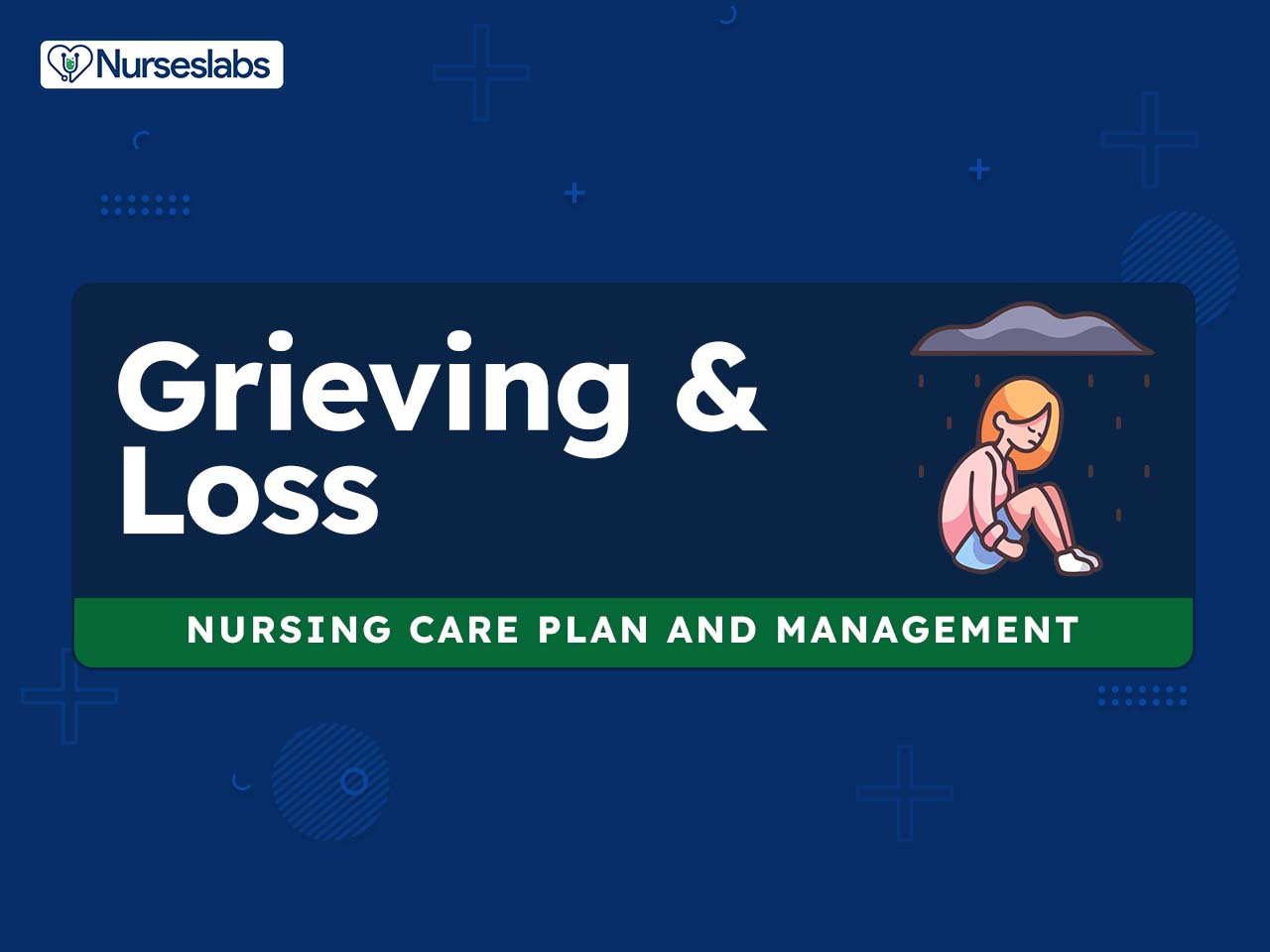




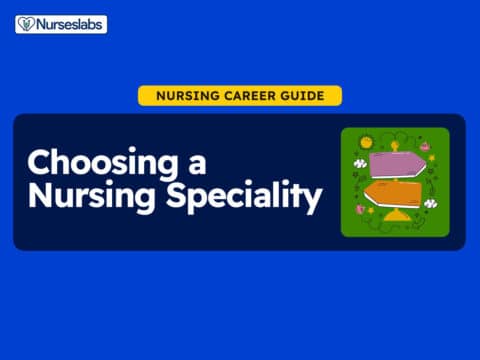













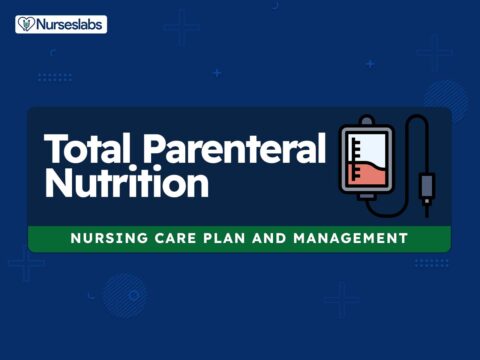
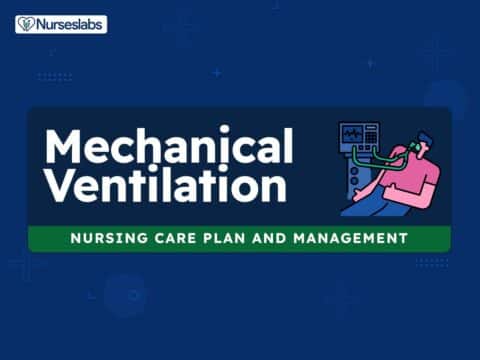
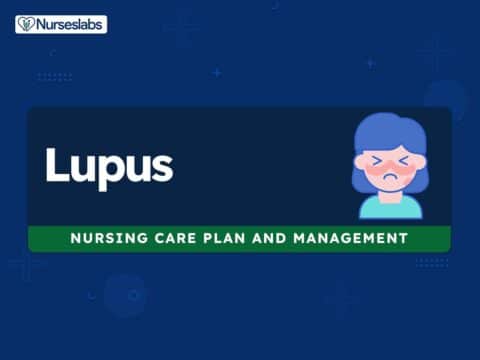

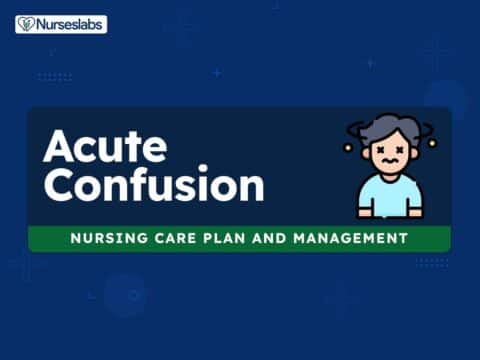


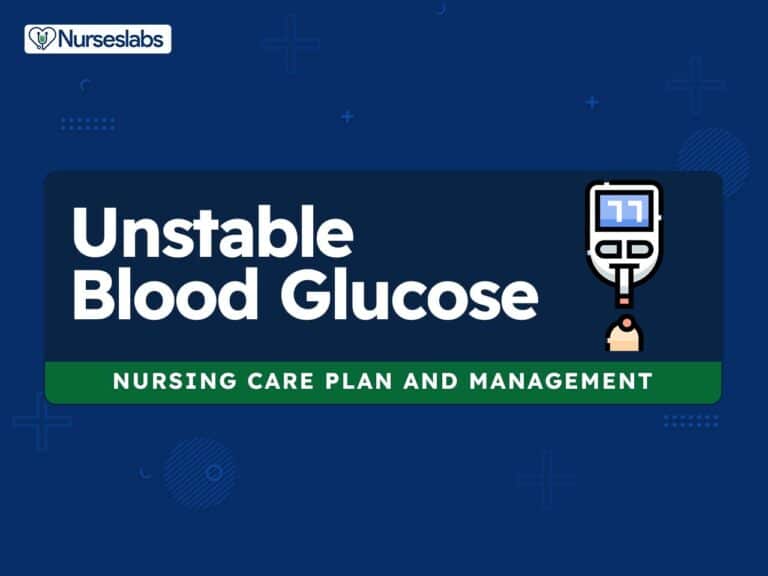



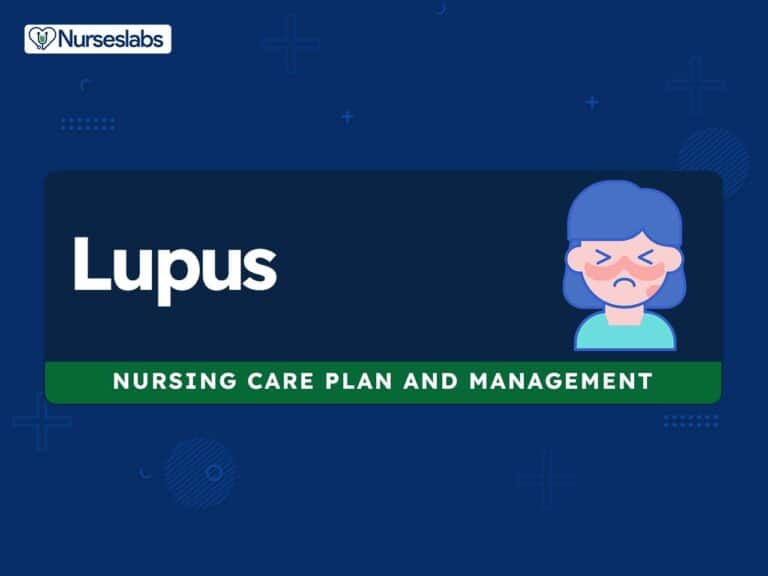

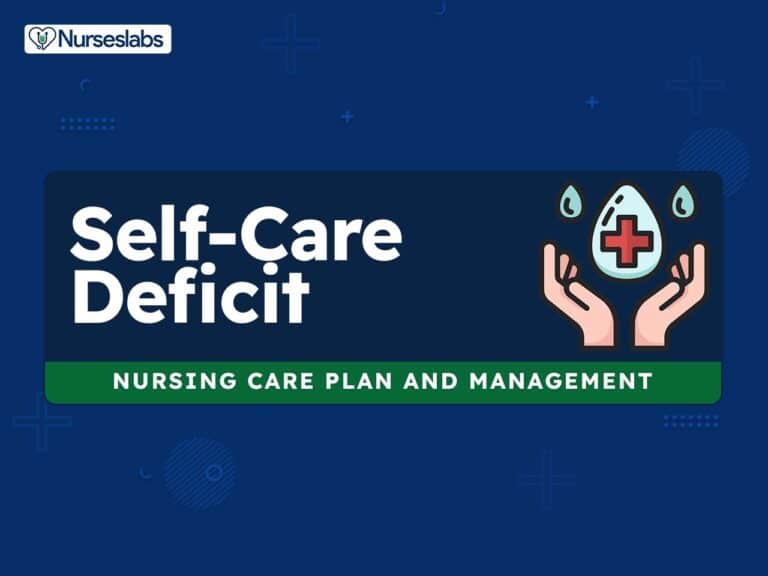
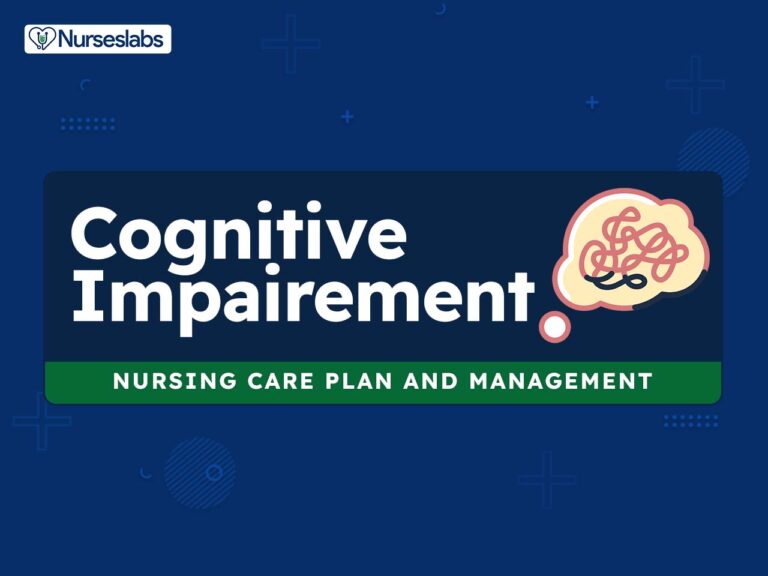
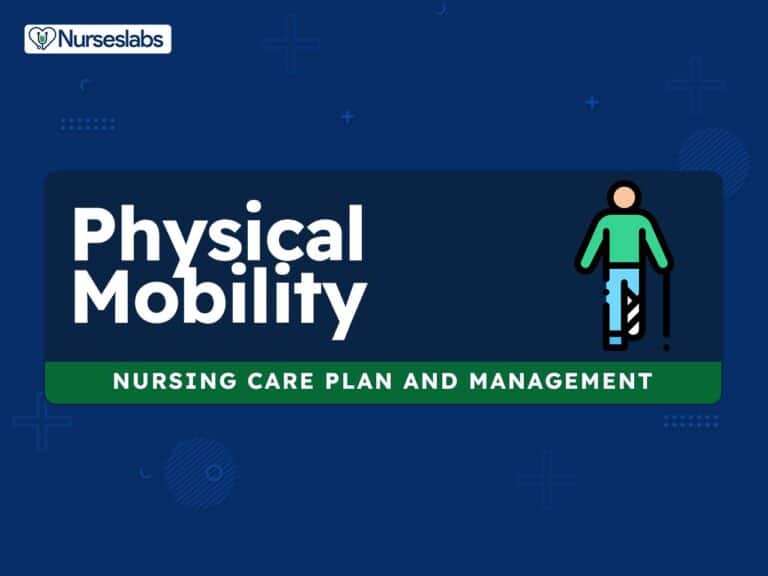

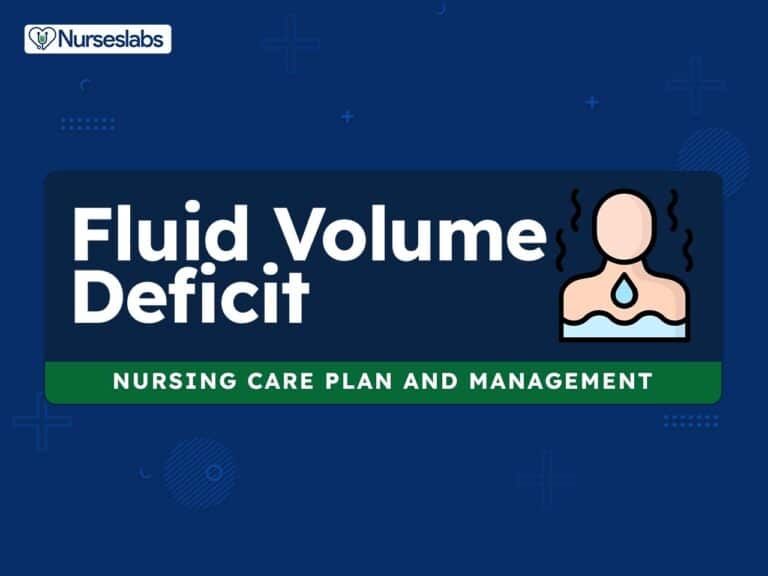
Leave a Comment